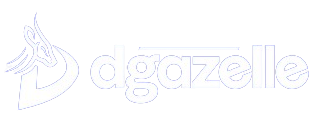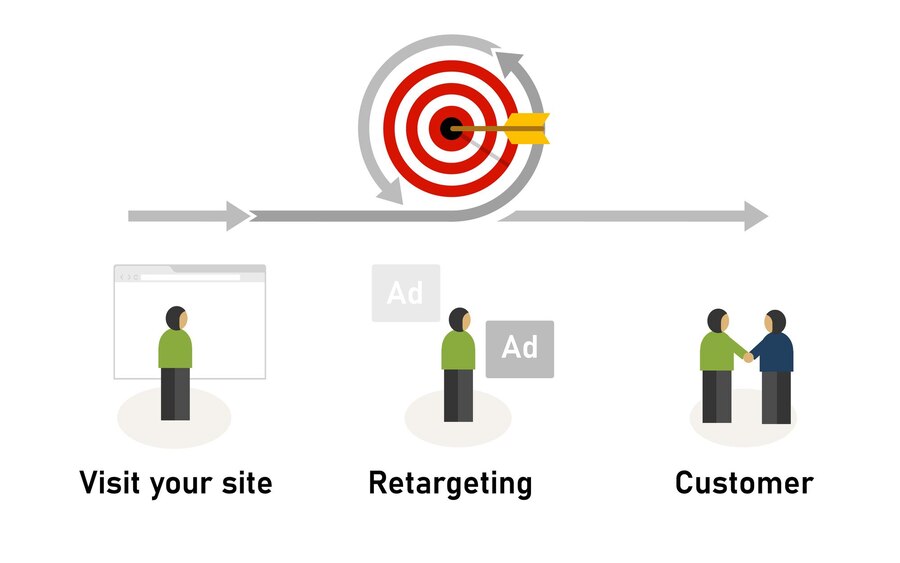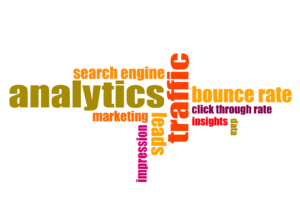Retargeting is essential for capturing valuable leads, most of your target audience isn’t ready to buy — 90% lack interest, need, or motivation. Only 3% are actively purchasing, while 7% are exploring options and can be re-engaged with targeted ads. Considering that 97% of website visitors never return.
Retargeting (or remarketing in Google Ads) involves showing ads to users who’ve interacted with your website, helping you attract qualified customers. Marketers avoid retargeting due to its perceived complexity but retargeting is crucial for your company because it draws in your best clients. Dgazelle can assist you in launching your retargeting campaign and utilizing sophisticated remarketing strategies to increase your paid channel revenue.
What is Retargeting
You’ve likely encountered retargeting before — for example, after viewing a product on an e-commerce site, you might notice ads for that product on other websites. This isn’t coincidence; it’s an effective marketing tactic.
Retargeting is a digital marketing strategy that re-engages users who have visited your website but haven’t completed the desired action, like making a purchase. It works by displaying personalized ads to these users on other platforms or websites they visit, encouraging them to return.
Unlike traditional ads targeting unfamiliar audiences, retargeting focuses on people already familiar with your brand, increasing the likelihood of conversion.
Types of Retargeting
Retargeting strategies vary based on user interactions and platforms. Here are the key types:
- Site Retargeting: Targets users who visit your website but don’t convert. For example, someone views a product on your online store but doesn’t purchase, then later sees an ad for it on another site.
- Search Retargeting: Displays ads based on users’ search queries. If someone searches “best running shoes,” they may later see your ads for running shoes on other sites.
- Social Media Retargeting: Targets users on platforms like Facebook or Instagram after they’ve engaged with your website. A user who browses your software solutions might see an ad for it on their Instagram feed later.
- Email Retargeting: Engages users who opened your emails but didn’t act. For example, an email reader who skips a discount offer might see a reminder ad later online.
- Dynamic Retargeting: Personalizes ads based on specific products viewed. If someone explores a laptop model on your site, they’ll see an ad for that exact product on another platform.
Why Retargeting Works
Most visitors don’t convert on their first site visit—only 2% make a purchase initially. Retargeting helps re-engage the remaining 98%, reminding them of your products or services.
By bringing previous visitors back, retargeting increases conversion opportunities and boosts brand awareness. It keeps your business top of mind, ensuring potential customers don’t forget you.
Even if they don’t convert immediately, familiarity with your brand grows. When it’s time to buy, these prospects are more likely to choose your business over competitors, giving you an edge in their decision-making process.
How to Effectively Retarget Audience
Retargeting is a powerful way to re-engage potential customers, and platforms like Google Ads and Facebook Ads make it accessible. Google Ads uses the term “remarketing,” which means the same thing.
- To start, segment your audience based on their stage in the sales funnel. For instance, visitors who only viewed your homepage may respond better to general brand awareness ads, while those who visited specific product pages might engage more with ads featuring those products or related deals.
Setting up retargeting campaigns involves both technical and creative steps. First, install tracking pixels—small pieces of code that connect your site with platforms like Google or Facebook. To generate pixels:
- For Google Ads: Go to “Tools & Settings” > “Audience Manager” > “Audience Sources” > “Set Up” under Google Ads Tag.
- For Facebook Ads: Navigate to “Events Manager” > “Pixels” > “Add.”
Place these pixels on your site’s header or use a tag manager like Google Tag Manager.
2. Once the technical setup is complete, and you have segmented your audience by actions like page visits or time spent on your site. Create personalized ads with tailored messaging and visuals that resonate with each group. Launch your campaigns by selecting objectives like “Display” or “Search” in Google Ads, or by targeting custom audiences in Facebook Ads.
3. Monitor campaign performance using metrics like click-through rates (CTR), conversion rates, and return on ad spend (ROAS). Tools like Google Analytics 4 (GA4) and A/B testing will help you refine your strategy for better results.
Sounding too technical? Dgazelle can streamline this process for you, from technical setup to campaign optimization, ensuring your retargeting efforts are both effective and efficient. Let us help you maximize your ROI with tailored strategies.
Best Tools for Retargeting
Choosing the right tools for retargeting depends on your audience, channels, and goals. Here are some top picks:
- HubSpot Marketing: Tracks user interactions, segments audiences, and integrates with CRM for personalized campaigns. Ideal for nurturing leads and boosting conversions.
- Facebook Pixel: Tracks user activity on your site and retargets them on Facebook and Instagram. Supports conversion tracking and ad optimization.
- Google Tag: Simplifies adding tracking pixels and integrates with Google Ads and Analytics for targeted retargeting.
- Twitter Retargeting Pixel: Tracks site visitors to retarget them with tailored Twitter ads.
- AdRoll: Manages cross-platform retargeting with dynamic ads and detailed analytics.
- MailChimp: Automates retargeting ads via Facebook and Google, perfect for abandoned carts or new products.
Best Practices for Successful Retargeting
- Segment Your Audience: Tailor campaigns to different user behaviors. Offer discounts to demo abandoners and provide educational content for blog readers. Align ads with each audience’s stage in the buyer journey.
- Cap Ad Frequency: Avoid ad fatigue by limiting exposure to 5–7 ads per user weekly. Frequency caps maintain visibility, optimize budgets, and prevent annoying users.
- Optimize for Funnel Stages: Top-of-funnel users need awareness-focused content, while middle-funnel users prefer detailed info. Bottom-funnel audiences respond to offers and reminders.
- Track Performance: Use tools like Google Analytics to monitor CTR, CPC, and ROAS. Adjust campaigns based on data for optimal results.
- Refresh Creatives: Regularly update ads to prevent fatigue. A/B test headlines, visuals, and CTAs to maintain engagement.
- Focus on Exclusion Lists: Exclude converters or disinterested users to save budget and target high-potential audiences.
Common Retargeting Mistakes to Avoid
- Retargeting can grow your brand, but missteps can hurt conversions. Avoid targeting broad audiences; focus on users who visited specific pages or abandoned carts. Limit ad frequency to 15–20 impressions monthly to prevent annoying users.
- Don’t use the same ad for everyone. Tailor creatives to align with different stages of the buyer journey and rotate ads regularly to keep campaigns fresh. Neglecting mobile optimization can hinder conversions, so ensure your landing pages are mobile-friendly and seamless to navigate.
- Excluding converted users is crucial. Add code to your checkout or thank-you pages to stop retargeting buyers, saving money and avoiding frustration.
- Timing is vital; show ads promptly after site visits to maintain interest. Lastly, prioritize post-click experiences. Ensure landing pages load fast, match the ad’s promise, and engage users to complete the funnel effectively.
Conclusion
Retargeting is a vital tool in digital marketing, but it’s just one piece of the puzzle when it comes to optimizing your website for customer acquisition. To truly unlock your website’s potential, you need a comprehensive approach that includes diverse strategies and techniques.
Sounding too technical? Dgazelle can streamline this process for you, from technical setup to campaign optimization, ensuring your retargeting efforts are both effective and efficient. Let us help you maximize your ROI with tailored strategies.







